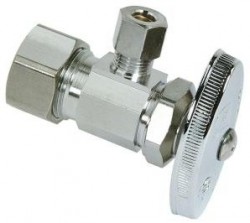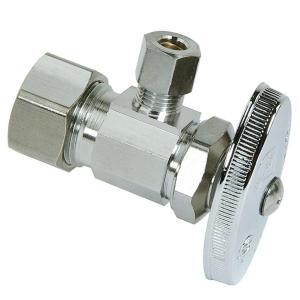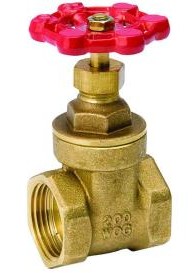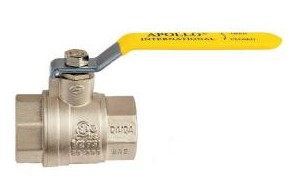
Your guide to plumbing valves

Infrequent use of pipes with globe valves encourages corrosion on the exposed stem making closing difficult and causing damage to the gland seal.
In remodeling, plumbing or maintenance, you’ll encounter a wide variety of plumbing valves. Included in this guide to plumbing valves are the most common stop valves like the globe/stop, gate and ball valve. All three are used as shut-off valves in plumbing.
Globe/stop valves
The common globe/stop valve is typically found in the water supply to faucets, toilets, laundry rooms, dishwashers, and even outside hose bibs. The valve has a rubber gasket that is forced down onto a seat to stop the flow of fluid in the pipe.
Turning the handle in a clockwise direction to seat the gasket stops the flow. The valve is directional and, if it’s an in-line stop valve, it must be installed so the flow is in the direction of the arrow marked on the valve.
This type of plumbing valve is fairly inefficient and often results in a significant pressure drop and restriction of flow. However, it does a good job of regulating flow in a partially open position, hence its frequent use as a hose bib.
Most common repair
Infrequent use of pipes with globe valves encourages corrosion on the exposed stem making closing difficult and causing damage to the gland seal. Leakage here can often be contained by tightening the gland nut around the stem.
Alternately, frequent use, such as with a hose bib, may require replacement of the rubber washer. To replace the washer, remove the entire cartridge to access the washer by undoing the large hexagon on top of the valve body.
Gate valves
An alternative valve to stop the flow of a liquid is the gate valve. It uses a ground, slightly tapered gate that is lowered by twisting a handle in a clockwise direction into a groove machined in the valve housing to positively shut off the flow.
When wide open, it offers no restriction to the fluid flow, which is its main advantage. And while it can also be used to restrict flow by opening it partially, the flow over the exposed gate can wear the machined edges and cause it to leak in the closed position.
Most common repair
As with globe valves, infrequent encourages corrosion on the exposed stem, making closing difficult and damaging to the gland seal. Leakage can sometimes be controlled by tightening the gland nut. If there is significant wear on the gate tightening will not stop the leak and the valve will have to be replaced.
Ball valve
The third type of shut-off valve is the ball valve. This valve type uses a carefully machined ball in a nylon or other type of plastic bushing. The ball has a machined hole to allow the flow through the ball or by rotating a quarter turn, the machined face of the ball cuts off the flow.
The advantage to this type of plumbing valve is that it can be closed very quickly and the direction of the handle provides a visual confirmation of whether the flow is open or closed.
The disadvantage is that the lever tends to be longer and more difficult to accommodate in a restricted place than the globe or gate valve. If the hole in the ball is the same size as the pipe – requiring the body of the valve to be larger – the flow is completely unrestricted in the open position.
In general, they are less susceptible to external corrosion on the stem and there is no leakage around gland nut seals. Because of the visual confirmation of open and closed position, ball valves are commonly used on gas lines and water mains.
Most common repair
Ball valves are long-lasting and virtually trouble-free. However, they can seize. A high-creep lubricant may help free a valve, but it will eventually have to be replaced entirely once it begins to seize.
—By Steve Sturgess, stevesturgess.com



